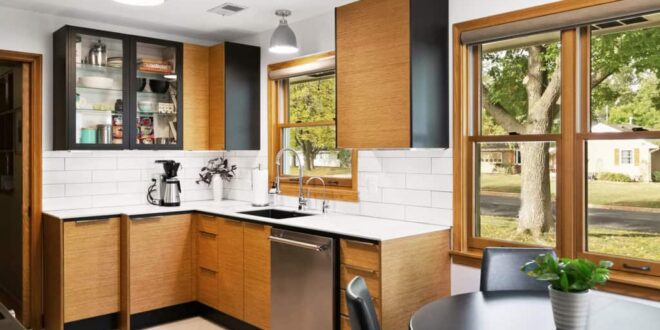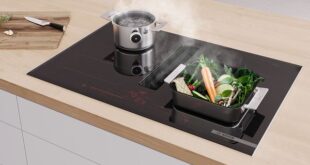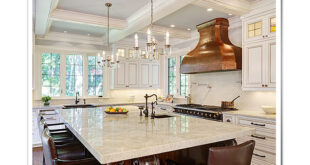Two-Tone Kitchen Cabinets: A Stylish Revolution in Kitchen Design
Gone are the days of kitchens uniformly clad in a single color. Enter the captivating world of two-tone kitchen cabinetry, a design trend that’s not just a fleeting fad but a powerful statement of personal style and sophistication. This approach, blending two distinct colors on your cabinets, opens up a realm of creative possibilities, allowing you to inject personality, depth, and visual interest into the heart of your home. But is it right for you? Let’s dive deep into the nuances of this design marvel and explore how to make it work flawlessly in your own kitchen.
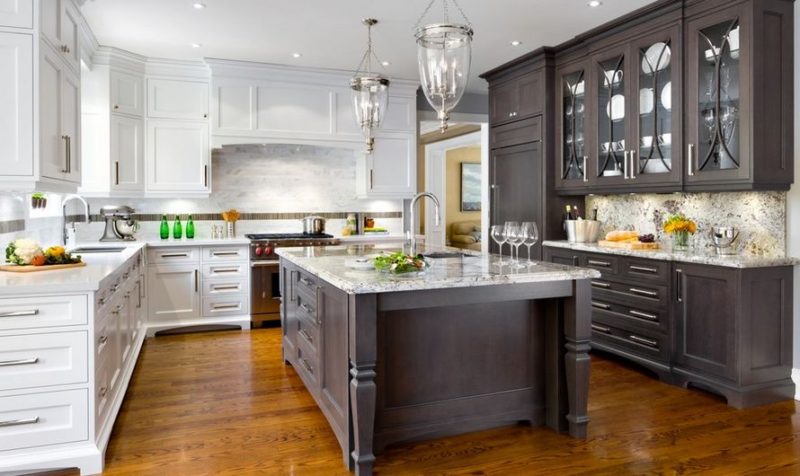
Two-tone kitchens have experienced a surge in popularity for good reason. They offer a dynamic contrast that can highlight architectural features, create a focal point, and even visually expand the space. The strategic use of color can draw the eye upward, making a low-ceilinged kitchen feel more spacious. Conversely, darker lower cabinets grounded by lighter upper cabinets can make a large, open kitchen feel cozier and more inviting. The beauty of two-tone cabinets lies in their versatility and adaptability to a wide range of kitchen styles, from modern minimalist to rustic farmhouse. The possibilities are truly endless.
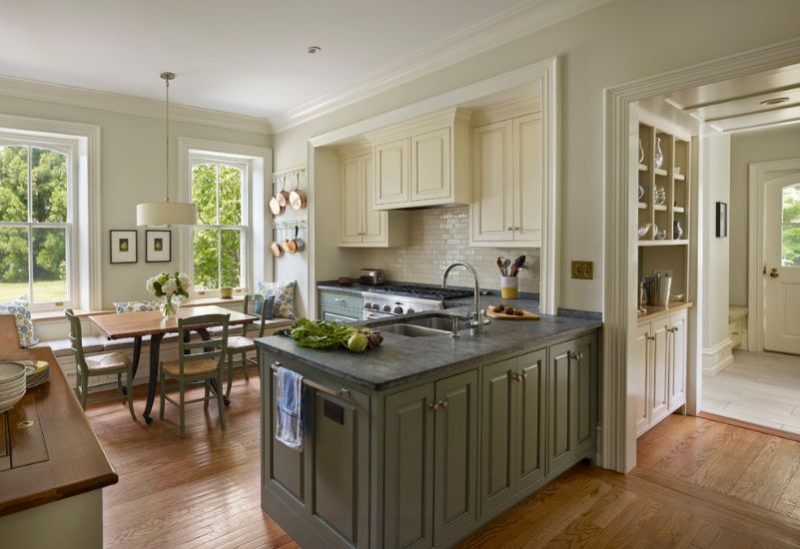
Why Choose Two-Tone Kitchen Cabinets? Unveiling the Benefits
Before we delve into the how-to’s and the do’s and don’ts, let’s explore the compelling reasons why two-tone kitchen cabinets might be the perfect choice for your next kitchen renovation:
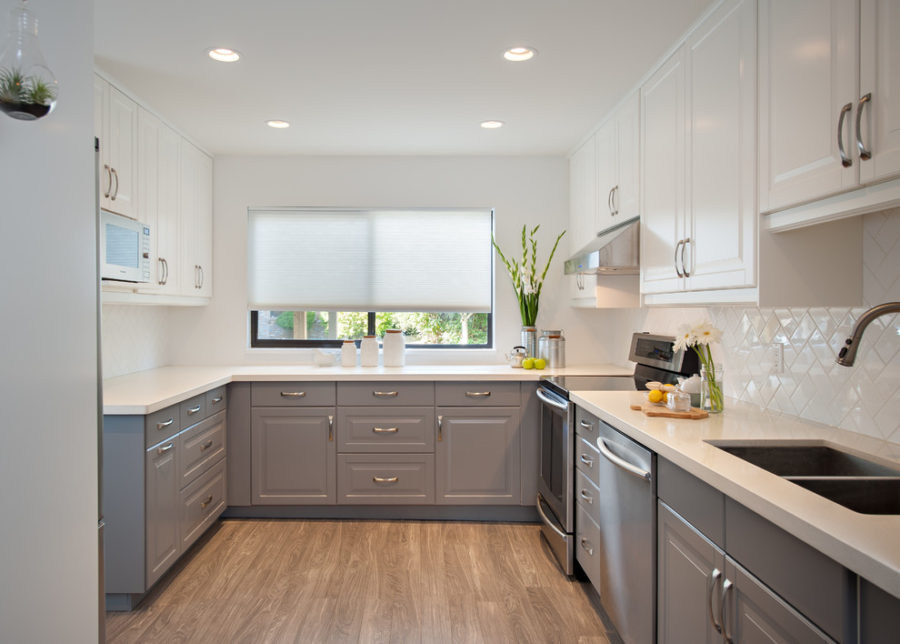
- Enhanced Visual Interest: A two-tone design breaks up the monotony of a single color, adding depth and dimension to your kitchen. It’s like adding a layer of intrigue, making your kitchen visually captivating.
- Personalized Style: This approach allows you to express your unique personality and style preferences. You can choose colors that resonate with you, creating a kitchen that truly reflects your taste.
- Highlighting Architectural Features: Use contrasting colors to accentuate interesting architectural details, such as a kitchen island or a unique cabinet configuration. Imagine using a vibrant color on your island to make it the centerpiece of the room.
- Defining Zones: Differentiate between upper and lower cabinets, or island and perimeter cabinets, to create distinct zones within the kitchen. This can be particularly useful in open-concept spaces.
- Creating a Focal Point: A strategically placed accent color can draw the eye to a specific area, like a beautiful range hood or a stunning backsplash.
- Increased Perceived Space: Lighter upper cabinets can make a small kitchen feel brighter and more spacious, while darker lower cabinets can ground a large kitchen, making it feel cozier.
- Modern and Timeless Appeal: When executed well, two-tone kitchens possess a timeless quality, seamlessly blending modern aesthetics with classic design principles.
Planning Your Two-Tone Kitchen: Key Considerations
Now that you’re sold on the idea of a two-tone kitchen, it’s time to roll up your sleeves and start planning. Here are some crucial considerations to keep in mind:
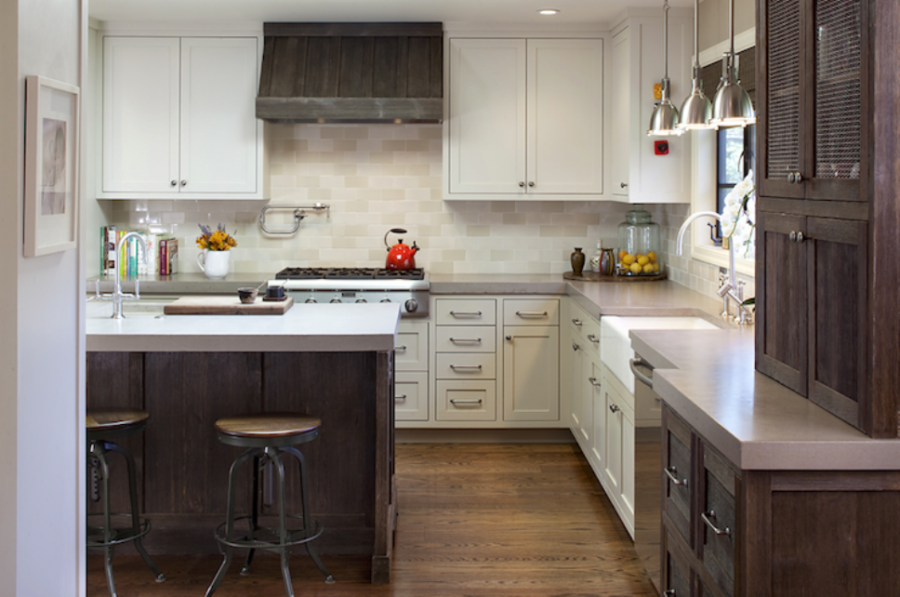
1. Color Selection: Finding the Perfect Harmony
Choosing the right colors is paramount to the success of your two-tone kitchen. Consider the following factors:
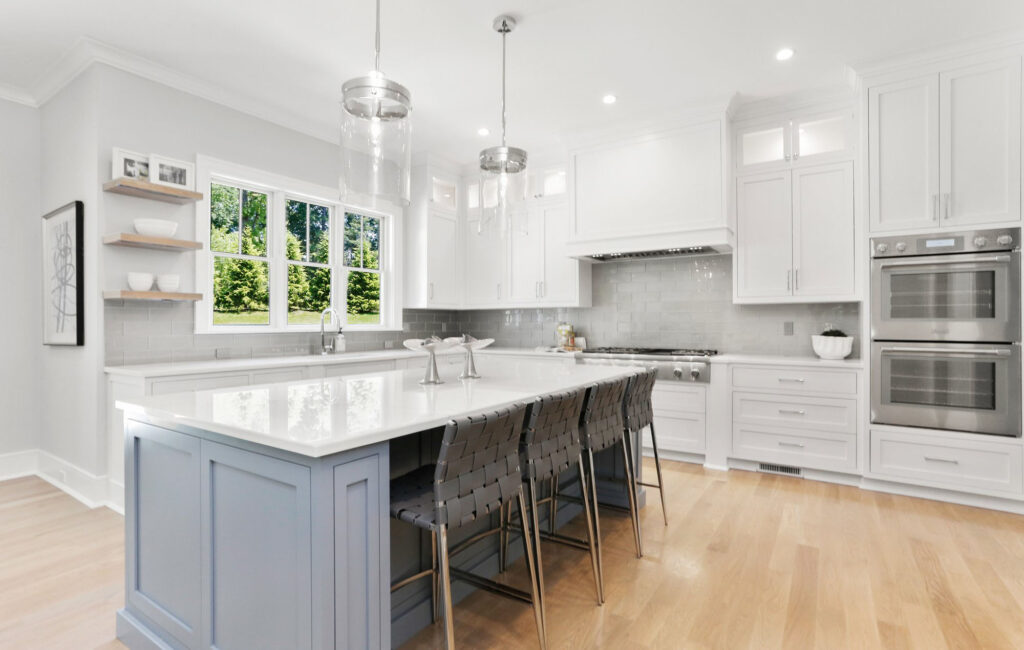
- Your Existing Kitchen Style: Does your kitchen lean towards modern, traditional, farmhouse, or something else? Your color choices should complement your existing style.
- Natural Light: How much natural light does your kitchen receive? Darker colors can make a poorly lit kitchen feel even smaller and gloomier.
- Personal Preferences: Ultimately, the colors you choose should be ones you love and enjoy spending time with.
- Color Psychology: Consider the psychological effects of different colors. Blues and greens are calming, while reds and yellows are energizing.
Popular Color Combinations:
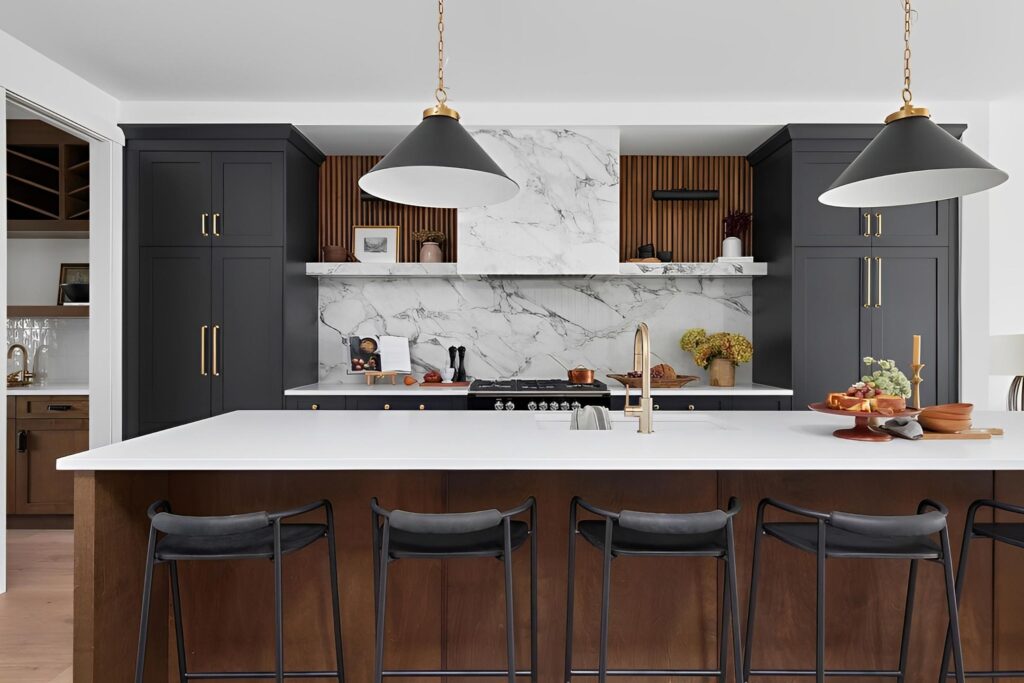
- White and Gray: A classic and versatile combination that works well in almost any kitchen style. White upper cabinets paired with gray lower cabinets create a clean and modern look.
- Navy Blue and White: A sophisticated and timeless choice that adds a touch of elegance to any kitchen.
- Sage Green and Cream: A soothing and natural combination that’s perfect for farmhouse and cottage-style kitchens.
- Black and White: A bold and dramatic combination that creates a striking contrast. This combination works exceptionally well in modern or contemporary kitchens.
- Wood Tones and White: The warmth of natural wood beautifully complements the crispness of white. This combination is ideal for transitional kitchens.
- Gray and Light Wood: A modern twist on a classic combination, offering a balance between warmth and coolness.
2. Cabinet Placement: Where to Use Each Color
The placement of your colors is just as important as the colors themselves. Here are some common approaches:
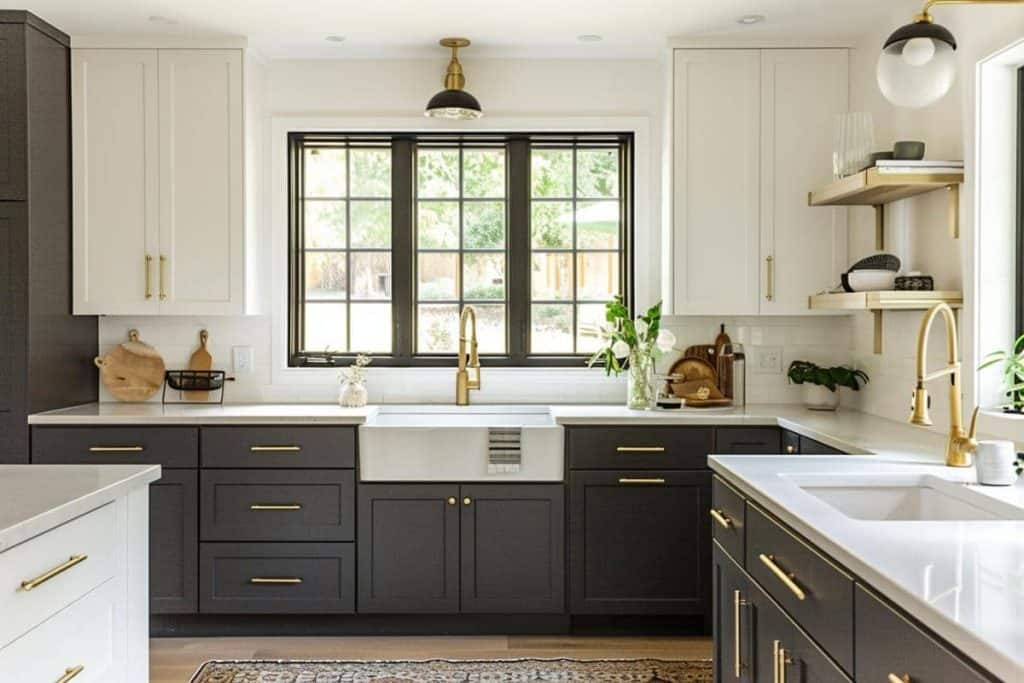
- Upper vs. Lower Cabinets: This is the most common approach, with lighter colors typically used on upper cabinets to create a sense of airiness and openness. Darker colors are often used on lower cabinets to ground the space and hide dirt and smudges.
- Island vs. Perimeter Cabinets: Use a contrasting color on your kitchen island to make it a focal point. This works particularly well if your island has unique features, such as a butcher block countertop or a built-in wine rack.
- Accent Cabinets: Choose a few select cabinets to highlight with a different color. This could be a pantry cabinet, a range hood cabinet, or a small set of open shelves.
- Inside vs. Outside: Painting the interior of glass-front cabinets a different color than the exterior can add a subtle yet striking detail.
3. Hardware and Fixtures: Completing the Look
Your hardware and fixtures play a crucial role in tying the entire look together. Choose hardware finishes that complement both cabinet colors. For example, brushed nickel or stainless steel hardware works well with both white and gray cabinets.
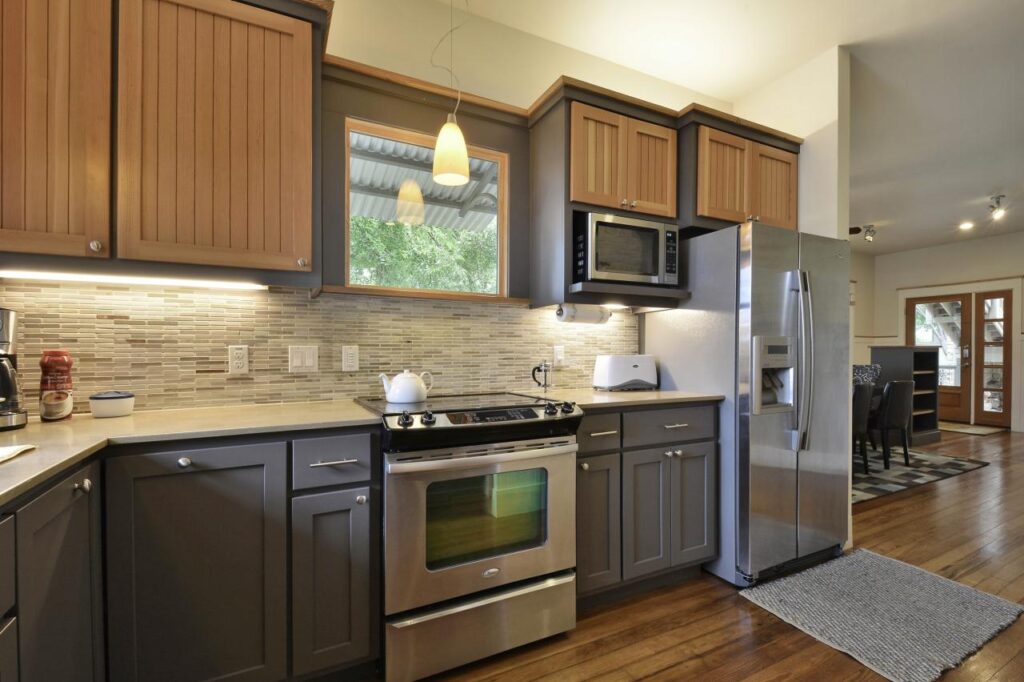
- Hardware Finishes: Consider the overall style of your kitchen when choosing hardware finishes. Polished chrome adds a touch of elegance, while matte black offers a modern and industrial feel.
- Countertops: Your countertops should complement both cabinet colors. Neutral countertops, such as white quartz or granite, are a safe and versatile choice.
- Backsplash: Your backsplash can be a great opportunity to add texture and pattern to your kitchen. Consider using a tile that incorporates both cabinet colors.
- Lighting: Proper lighting is essential for showcasing your two-tone kitchen. Under-cabinet lighting can highlight the beauty of your countertops and backsplash.
4. Kitchen Layout and Size: Tailoring the Design
The size and layout of your kitchen will influence your color choices and placement. In smaller kitchens, prioritize lighter colors to maximize the feeling of space. In larger kitchens, you have more freedom to experiment with darker colors and bolder combinations. If you have a galley kitchen consider the visual impact of having darker colors on one side versus the other. A professional designer can help you optimize your design based on your specific kitchen layout.
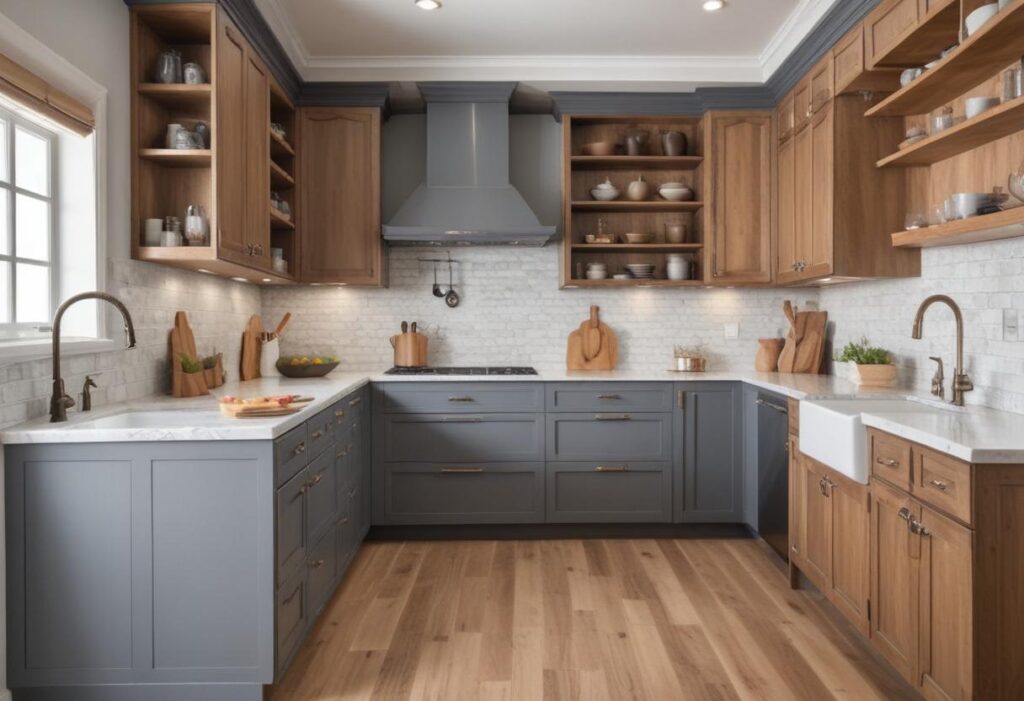
Dos and Don’ts of Two-Tone Kitchen Cabinetry
To ensure a successful two-tone kitchen transformation, heed these dos and don’ts:
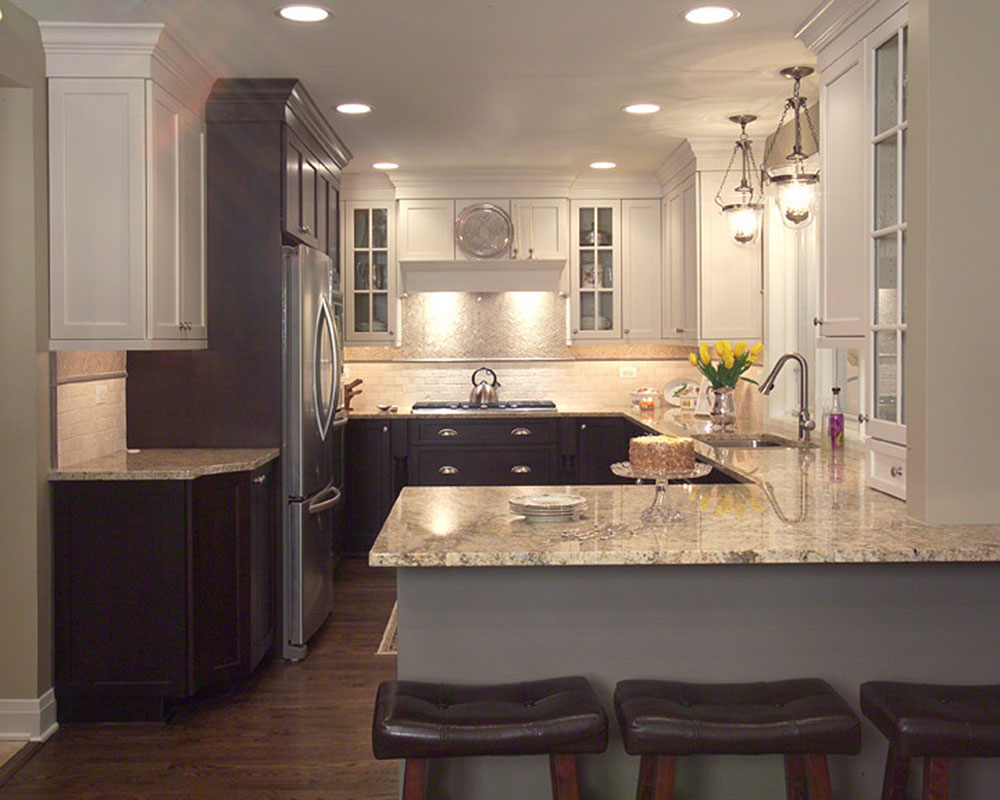
Dos:
- Do consider the natural light in your kitchen.
- Do choose colors that complement each other and your existing décor.
- Do use a professional designer for complex layouts or color schemes.
- Do test paint samples in your kitchen before committing to a color.
- Do pay attention to the undertones of your chosen colors.
- Do maintain a balance between the two colors.
- Do invest in high-quality paint and hardware.
- Do ensure proper ventilation when painting cabinets.
Don’ts:
- Don’t choose colors that clash or overwhelm the space.
- Don’t ignore the existing style of your kitchen.
- Don’t use too many colors in one kitchen.
- Don’t forget to prep your cabinets properly before painting.
- Don’t rush the painting process.
- Don’t neglect the hardware and fixtures.
- Don’t be afraid to experiment, but always with a plan.
Examples of Stunning Two-Tone Kitchen Designs
Let’s take a look at some inspiring examples of two-tone kitchen designs:
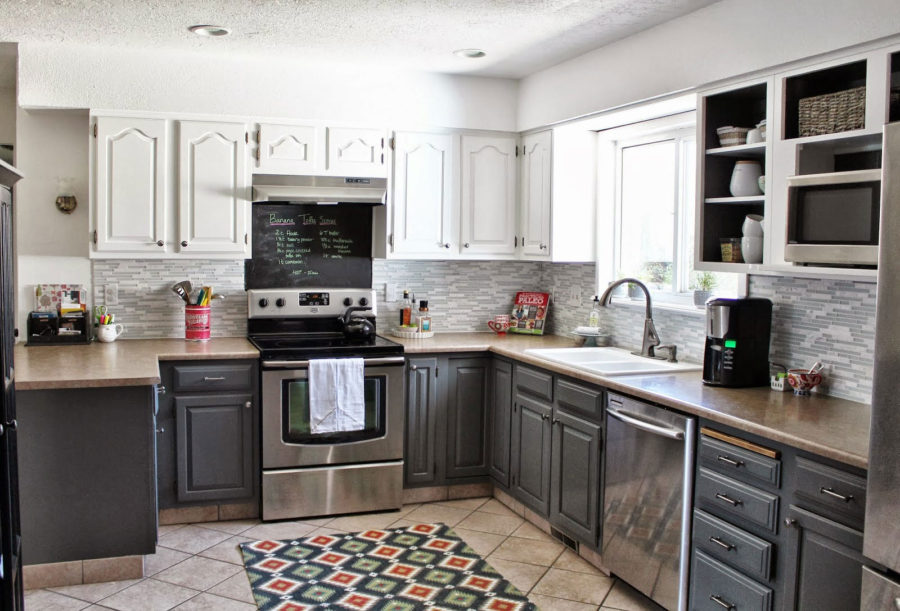
- Modern Farmhouse: White upper cabinets with shaker-style doors paired with a dark gray or navy blue island. This combination creates a warm and inviting space that’s perfect for gathering and entertaining.
- Contemporary Chic: Sleek, handleless cabinets in a combination of light gray and dark wood. This design exudes sophistication and elegance.
- Coastal Retreat: Light blue or green upper cabinets with white lower cabinets, reminiscent of the ocean and sand. This combination creates a relaxing and refreshing atmosphere.
- Industrial Edge: Dark gray or black lower cabinets with open shelves and exposed brick accents. This design is perfect for urban lofts and modern homes.
- Traditional Elegance: Cream-colored upper cabinets with a dark cherry or mahogany island. This combination creates a timeless and sophisticated look.
DIY vs. Professional Installation: Weighing Your Options
Deciding whether to tackle your two-tone kitchen cabinet project yourself or hire a professional is a big decision. Here’s a breakdown of the pros and cons of each approach:
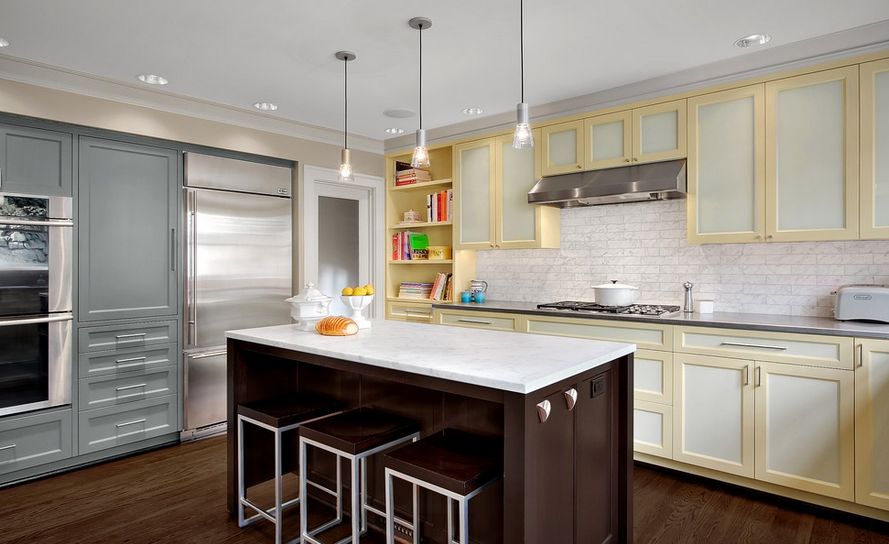
DIY:
Pros:
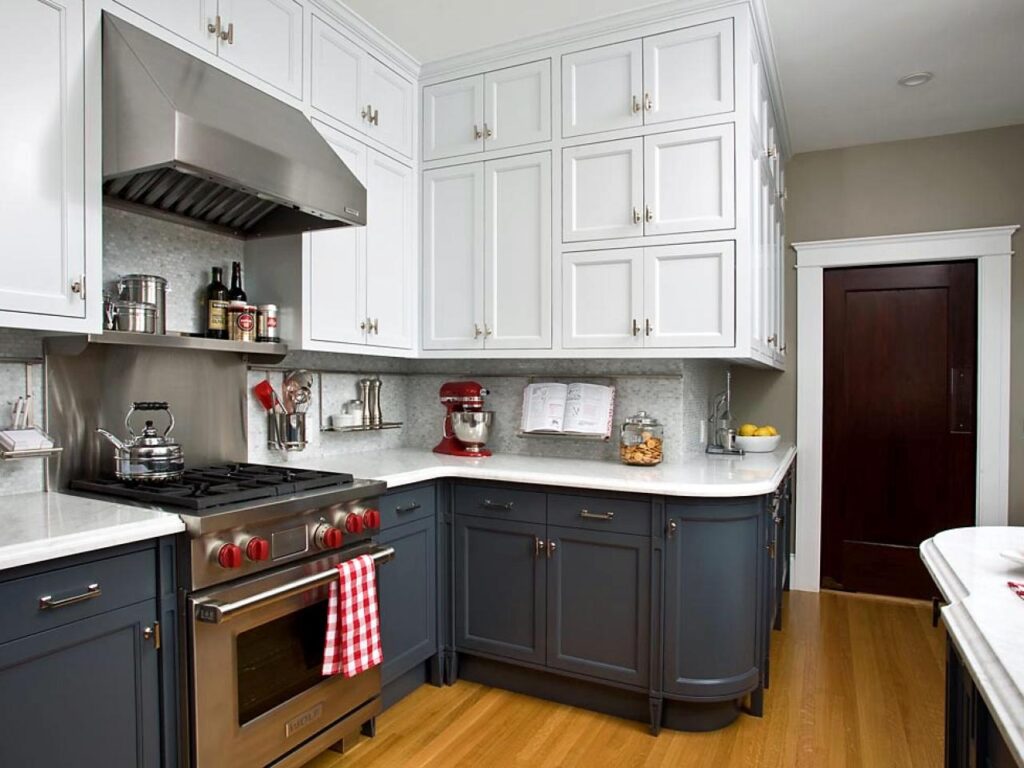
- Cost Savings: DIY projects can save you a significant amount of money on labor costs.
- Personal Satisfaction: There’s a great sense of accomplishment that comes with completing a project yourself.
- Flexibility: You can work at your own pace and make changes as you go.
Cons:
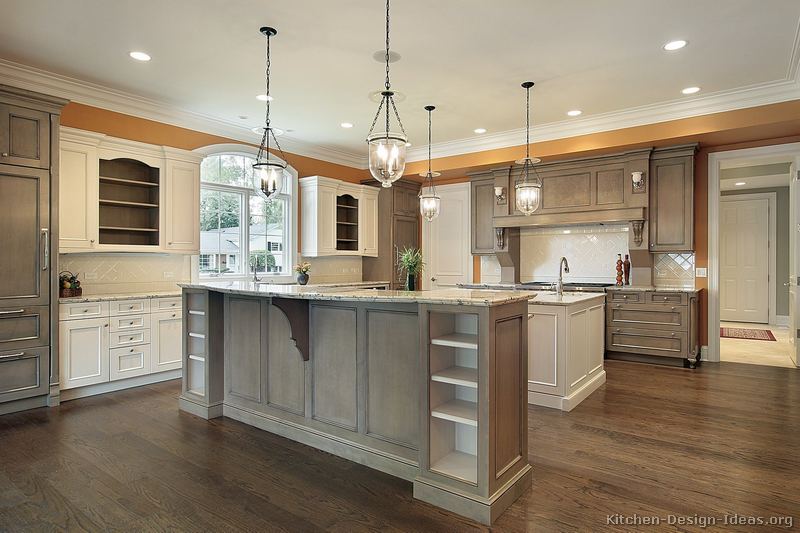
- Time Commitment: DIY projects can take a significant amount of time, especially if you’re not experienced.
- Potential for Errors: Mistakes can be costly and time-consuming to fix.
- Quality Concerns: The quality of your work may not be as high as a professional’s.
Professional Installation:
Pros:
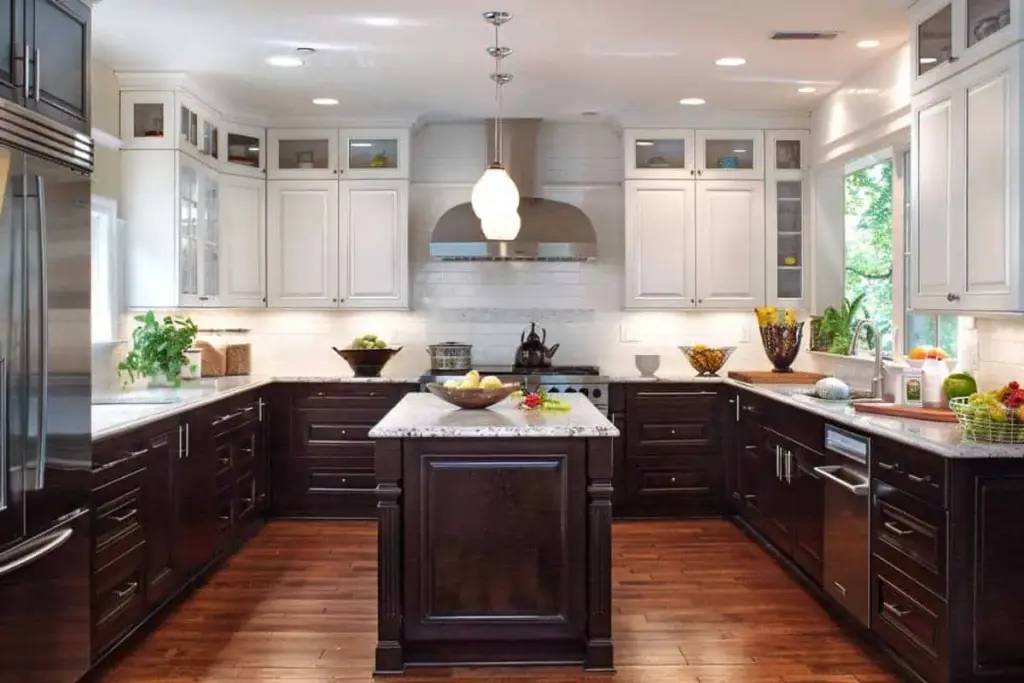
- Expertise and Experience: Professionals have the knowledge and skills to ensure a flawless installation.
- Time Savings: Professionals can complete the project much faster than you could on your own.
- Warranty and Guarantees: Professionals typically offer warranties and guarantees on their work.
Cons:
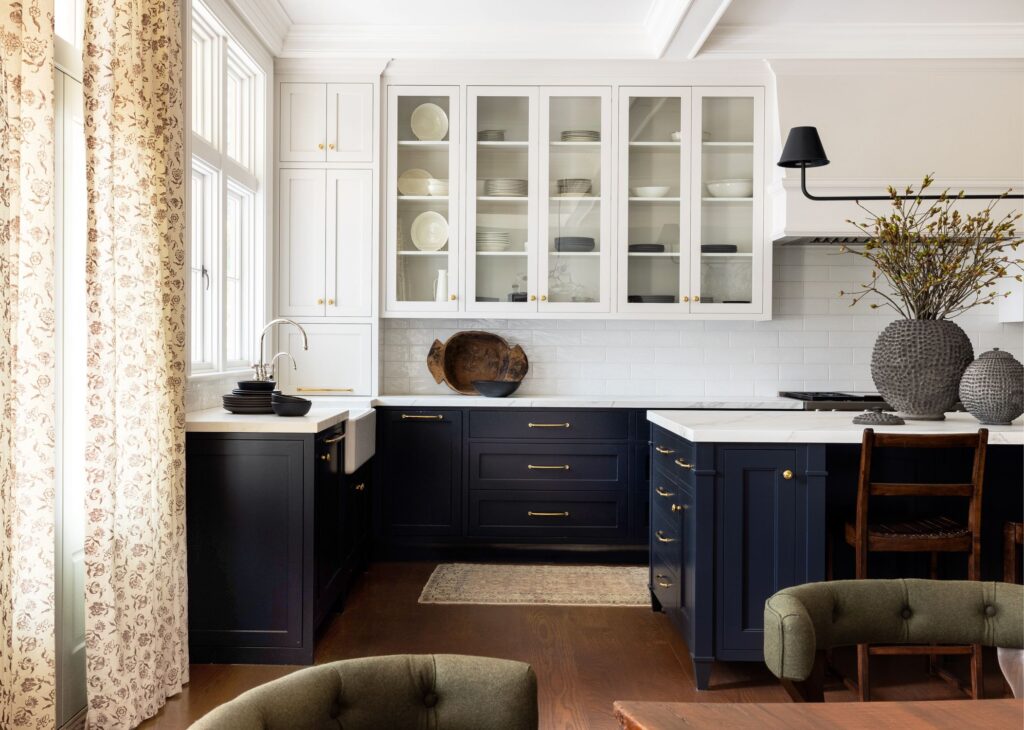
- Higher Cost: Professional installation is more expensive than DIY.
- Less Control: You have less control over the project timeline and execution.
Ultimately, the best choice depends on your budget, your skills, and your time constraints. If you’re a confident DIYer with plenty of time and patience, a DIY project may be a good option. However, if you’re looking for a flawless result and don’t have the time or skills to do it yourself, hiring a professional is the best choice.
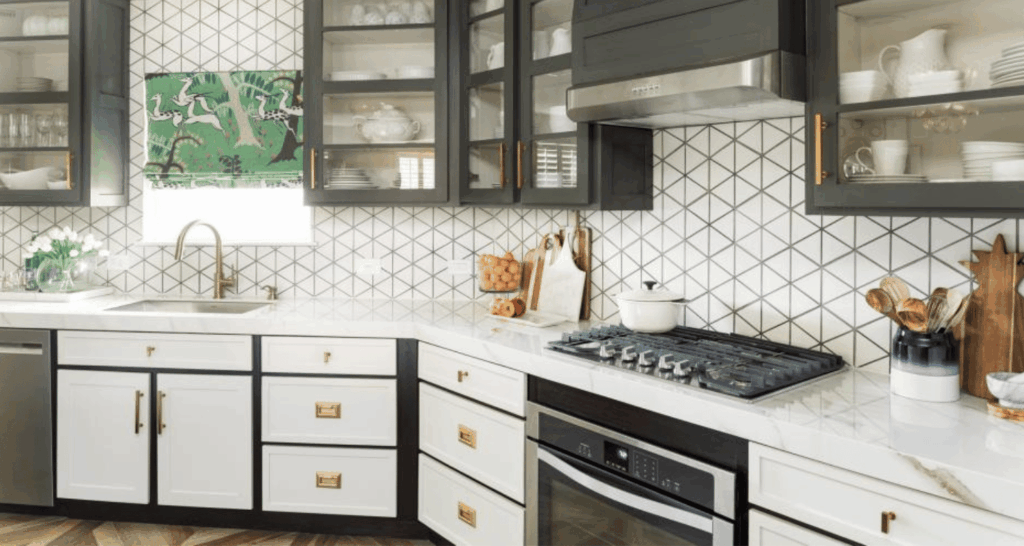
Maintaining Your Two-Tone Kitchen Cabinets: Keeping Them Looking Their Best
Once your two-tone kitchen cabinets are installed, it’s important to properly maintain them to keep them looking their best for years to come. Here are some tips:
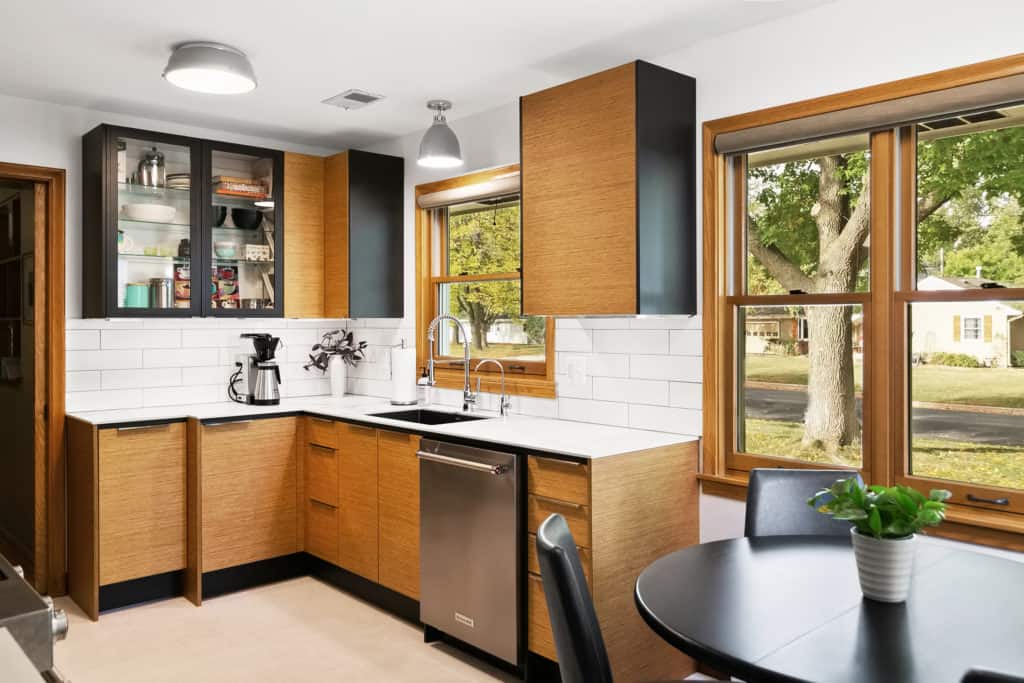
- Regular Cleaning: Wipe down your cabinets regularly with a damp cloth and mild soap.
- Avoid Harsh Cleaners: Avoid using abrasive cleaners or harsh chemicals, as these can damage the finish.
- Protect from Moisture: Wipe up spills immediately to prevent water damage.
- Touch-Up Paint: Keep a small amount of touch-up paint on hand to repair any chips or scratches.
- Proper Ventilation: Ensure proper ventilation in your kitchen to prevent moisture buildup.
The Future of Two-Tone Kitchens: Trends to Watch
The two-tone kitchen trend is constantly evolving. Here are some trends to watch in the future:
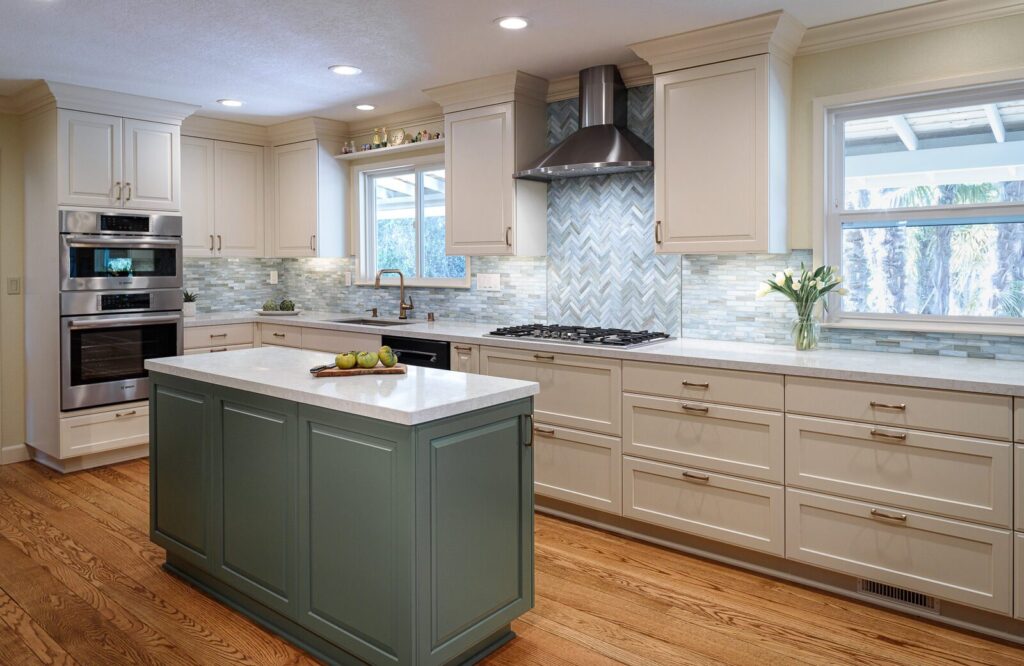
- Bold Color Combinations: Expect to see more homeowners experimenting with bolder and more unexpected color combinations.
- Textured Cabinets: Textured cabinets, such as wood grain or raised panels, will add depth and dimension to two-tone kitchens.
- Smart Kitchen Technology: Integrated smart kitchen technology, such as voice-controlled lighting and appliances, will become increasingly common.
- Sustainable Materials: Expect to see more homeowners choosing sustainable and eco-friendly materials for their kitchen cabinets.
In Conclusion: Embracing the Two-Tone Trend
Two-tone kitchen cabinetry is more than just a trend; it’s a design philosophy that empowers you to create a kitchen that’s uniquely yours. By carefully considering your color choices, cabinet placement, hardware, and overall kitchen style, you can transform your kitchen into a stunning and functional space that you’ll love for years to come. Whether you choose to DIY or hire a professional, remember to plan carefully, pay attention to detail, and most importantly, have fun with the process!
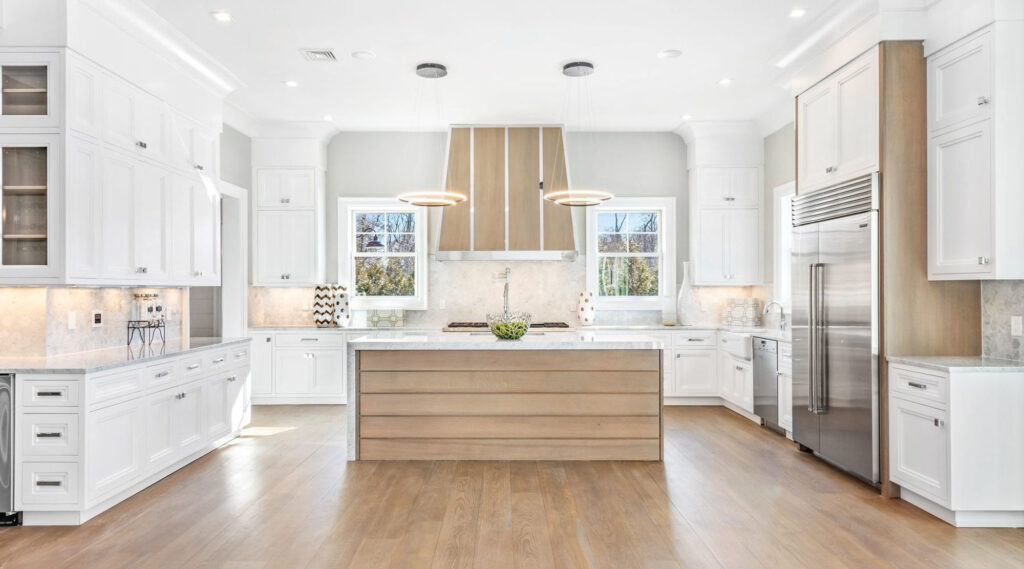
So, are you ready to take the plunge and embrace the beauty and versatility of two-tone kitchen cabinets? The possibilities are endless, and the rewards are a kitchen that reflects your personality and style, making it truly the heart of your home. Don’t be afraid to experiment, get creative, and let your imagination run wild. Your dream kitchen awaits!
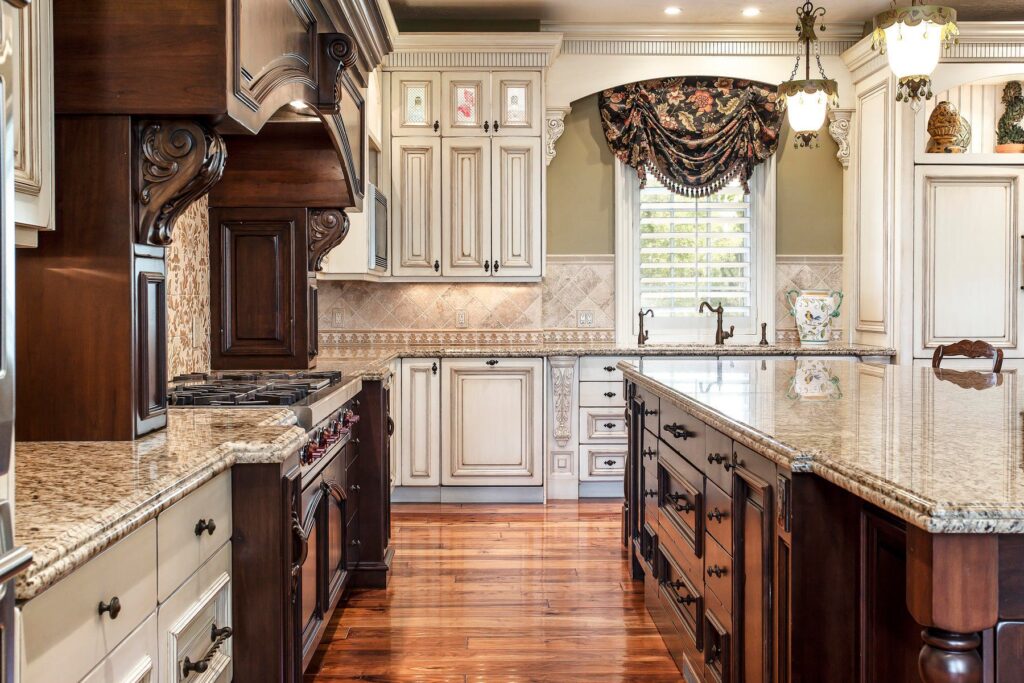
 Nimila
Nimila
